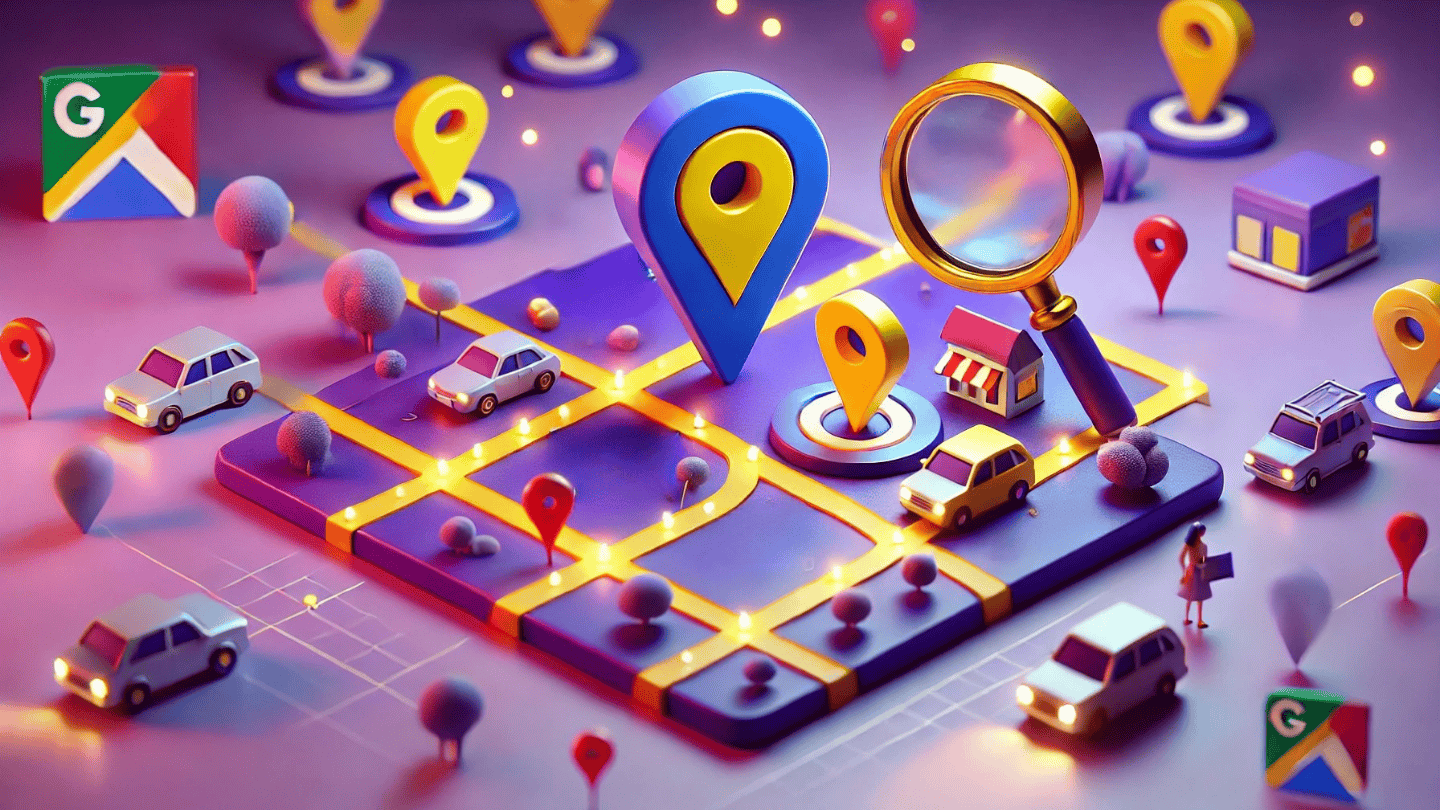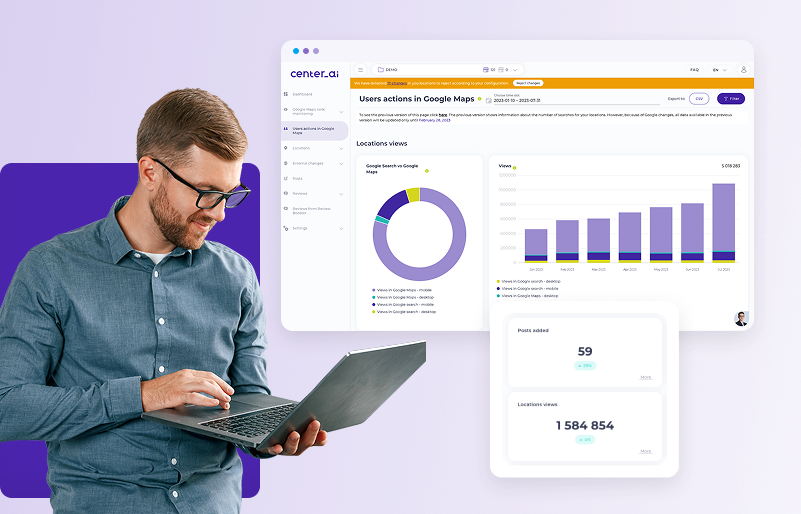How Google Maps influences omnichannel strategy building

Weronika
October 4, 2024
|
In the digital world, consumers are becoming increasingly sophisticated in their shopping habits. It’s no longer a straightforward path from interest in a product or service to purchase. The modern consumer might start their shopping journey on a smartphone while commuting, continue on a laptop at home, and then finalize their purchase in a physical store. In this intricate consumer landscape, numerous touchpoints can play to a retailer’s advantage – from social media and online stores to traditional brick-and-mortar shops. Each has its role in the purchasing process, and brands need to be present and accessible in all of them to offer a consistent and satisfying customer experience. This is what we call an omnichannel strategy, in which brands increasingly recognize the value of Google Maps. It’s not just a tool to show store locations but also a platform for interacting with customers, gathering feedback, and tailoring offers to local needs. Google Maps has become an integral tool in building an omnichannel strategy.
Google Maps business profiles as a crucial omnichannel element
For many consumers, the Google Maps business profile is the first touchpoint with a brand when looking for the nearest store or restaurant. With features like customer reviews and photos, Google Maps offers a full spectrum of information that customers can use to purchase. It’s no longer just a simple tool for locating physical sales points. Today, a Google Maps business profile acts as a virtual storefront, showcasing, among other things, offers, customer reviews, photos, and current opening hours. By optimizing this profile, businesses can effectively communicate with potential customers, increasing their chance of visiting a physical location. And that’s not all the benefits of including this channel in an omnichannel strategy!
Additionally, Google Maps business profiles allow companies to personalize communication, for instance, by promoting special offers or events at specific locations. Gathering feedback and suggestions from customers can be key to adjusting offers and services in response to local needs and preferences. In this context, it’s also a tool that helps build trust. New customers often rely on reviews left by others when seeking recommendations. High ratings and positive comments can sway a potential customer to choose a particular store or restaurant over competitors. Ultimately, Google Maps business profiles play a vital role not only in directing traffic to physical points but also in brand building and fostering customer relationships in the digital environment. In the omnichannel era, every customer touchpoint matters, and Google Maps has become one of the most essential tools in this strategy.
ROPO effect – bridging the online and offline worlds
In the age of the internet, everyone has access to almost unlimited sources of information about products and services before making a purchase. They compare prices, read reviews, watch demo videos, and analyze product specifications – all online. However, despite the digital revolution, many consumers still value the experience of shopping in a physical store where they can touch the product, try it out, or get a direct consultation. That’s why the ROPO (Research Online, Purchase Offline) phenomenon has become one of the key trends in consumer purchasing behavior in recent years. And here’s where Google Maps comes in as a tool connecting two worlds – online and offline. After extensively researching a product online and deciding to buy it in a brick-and-mortar store, a consumer uses Maps to find the most convenient location. It’s not just about simple navigation. Features like opening hours, current location photos, or even real-time traffic data make the decision to visit a store more informed. Thanks to Google Maps, customers can easily find the nearest sales point, check product availability, or reviews from other users. The ROPO effect emphasizes the importance of synergy between online and offline channels. With tools like Google Maps, brands can seamlessly connect these two worlds, providing customers with a comprehensive shopping experience that starts online and ends in a physical store.
Analyzing Google Maps data in the context of customer behavior
As one of the most frequently used navigation tools worldwide, Google Maps is a goldmine of information on customer behavior. Utilizing this data can significantly influence business decisions and help better align with market needs. What data should you pay attention to?
- Views: Data related to business profile views helps businesses understand how popular their location is among users. It provides insights into which outlets are visited most frequently and which ones might need additional promotion.
- Interaction with the brand: Clicks, especially those leading to official company websites, are an important engagement indicator. Companies can assess how many people go directly from Google Maps to their sites, gauging the efficacy of the business profile as a marketing tool.
- Reviews and ratings: Analyzing comments and customer ratings provides valuable hints about service quality, customer satisfaction levels, and potential areas for improvement. Moreover, positive reviews can serve as a promotional tool, while constructive criticism can pinpoint areas needing intervention.
- Demographic data analysis: Google Maps can also provide information about visitor demographics, such as where they come from or when they most often visit a particular place. This allows companies to tailor their marketing campaigns and promotions to specific target audiences.
Google Maps offers a rich data set that, when properly analyzed and interpreted, can become a key tool in crafting an effective omnichannel strategy. It allows businesses to better understand their customers and make more informed business decisions based on actual market needs.
Implementing Google Maps in your omnichannel strategy
Starting your Google Maps journey in an omnichannel strategy should begin with thorough business profile optimization. This is your virtual storefront in the world of Google. Ensure it contains up-to-date information such as address, opening hours, product or service photos, and links to your website and social media profiles. What else should you consider?
- Integration with other channels: Your Google Maps listing won’t operate in isolation. You need to ensure it’s a tool integrated with other sales channels, such as online stores, social media platforms, and emails. This ensures customers receive a consistent experience, regardless of their chosen channel.
- Regular data analysis from Google Maps allows you to monitor the effectiveness of the actions implemented and to adjust your strategy based on customer behaviors and needs.
- Respond to feedback: Google Maps gives customers the opportunity to leave reviews and ratings. Listening to what they have to say and responding appropriately can be key to building loyalty and long-lasting relationships.
- Team education: Your employees should be aware of the role Google Maps plays in the omnichannel strategy. Regular training and workshops will enable them to effectively use the tool and maximize the benefits derived from its application.
If you feel you need support in the implementation process or in optimizing your business on the Google Maps listing, remember that you don’t have to act alone. Collaborating with experienced experts, like the team at Center.ai, can help you fully harness this platform’s potential. Drawing from years of experience in the IT industry and partnerships with retail chains, our company is ready to help you achieve success in the world of omnichannel. To learn more, please contact us!
Share article:
Search Blog
Most popular posts
Join the newsletter
Receive the latest content on reputation building and boosting foot traffic in brick-and-mortar stores.








